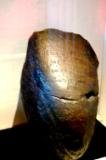They say all that glitters is not gold. Sometimes it’s just a reflection of the sun on the water or the dazzling reflection of a temple’s roof in the afternoon sun. And before you let those things blind your eyes and cloud your judgement about gold and jewellery, it’s best to go find out a bit more about them. Most especially if you are a muthu who could not tell a manikam from a meenachi.
Some may adhere to the saying, mother knows best. I will not argue with that although I must say that mother only knows best about certain things. While some mothers can be down right experts in the field of jewellery purchasing, I must also add that there have been numerous occasions when mothers have made their way to my office to lodge complaints that they have been cheated by unscrupulous jewellers in Thailand.
Since I am no expert on jewellery either, having bought only one ring in all of nearly 50 years, it is certainly not my intention to teach shoppers how to buy such items. Of course, I am not counting the rings bought from sellers of trinkets on the roadside.
And having over the last 10 years had to help solve problems of people who felt they were getting a bad bargain after having bought such items, especially from jewellery shops in Bangkok, I certainly feel I should say something about it.
The advice summarised below are taken from the Jewel Fest Club’s written guide on how to buy gems in Thailand. The Jewel Fest Club was set up several years ago following numerous complaints from the public, especially foreign tourists to Thailand, that they have been cheated when buying jewellery. Members of the Jewel Fest Club are those who felt that not all jewellers should be branded as cheats and that members of the club are honest in their dealings. Or at least if customers should later find their purchases to be unsatisfactory, they can easily return them and get a refund. How much refund would of course depend on the length between the period the complaints were lodged and the purchases were made.
However, the best advice that I can give you is not to rely on other people’s advice solely, all the more so if you are not an expert on gemstones and jewellery. Always be on the side of caution. It could save a whole lot heartache later on, not just for you but for the person who has to entertain to your complaints.
As I said this is by no means a complete guide to gem buying, but it is hoped that it would give you a better understanding of jewellery before you go splash your year-end bonus or three-month’s pay cheque.
To start with, be aware of the weight and percentage of gold in jewellery, meaning the heavier and more percentage, the more expensive. In other words, take into account the weight, size, amount and quality of gems. Here the principle of the 4Cs should be applied. The 4Cs should not be confused with the term used in Singapore, which is CONDO, CASH, CREDIT CARD and CAR as a sign of a man’s eligibility as a husband. Anyway, buyers of jewellery should consider the weight of each gemstone because a single, large gemstone is more expensive than several small ones.
As mentioned earlier there are four criteria to judge gems known as the 4Cs. Firstly COLOUR. For diamond, the clearer and whiter, the more expensive. But for other gemstones, it is more difficult to evaluate. There are many kinds of gemstones and there has never been a single standard to judge them, unlike diamond.
Sapphire, for example, is a kind of blue gemstone. The most valuable kind of sapphire possesses a blue velvet colour while sapphires with much lighter or darker shades are relatively cheaper.
Ruby is normally red but the standard colour is vermilion. Paler or darker shades are slightly cheaper.
Emerald is a green velvet stone and the cheapest kind is the one that is light green, approaching yellow. And although they look almost the same green to the untrained eye, emerald should not be confused with jade. Put a piece of jade to your cheek and if it is cold, then it’s jade. Or so I was told. Another criteria is that jade are usually set in rounded forms while emerald can be cut into different shapes such small as squares.
To buy gemstones with their colours as the main criterion, customers should look for those with medium shades, not too light and not too dark. They can also seek an expert’s advice before making a decision. (The experts should not include university students you meet on the road or finely-dressed gentlemen in temples, or worse still, people masquerading as temple caretakers, for example).
Second of the C is CLARITY, which actually concerns the level of contamination inside a gemstone. The less contamination and fewer defects a gem has, the more expensive it is. Sounds easy enough, right?
Thirdly is the CUT, which basically is the shape and balance of the gem facets. A quality cut creates a glittering reflection inside a gem.
Fourth, of course, is the CARAT WEIGHT. Quality gems are priced by their carat weights while inferior ones are priced by unit tagged with a fixed price. One carat weighs 200 milligrams.
Then we come to the craftsmanship and designs. These should be self-explanatory. As they say, beauty is in the eye of the beholder. Some may prefer say an uncluttered small piece of ring like a wedding band while others may like to have something which resembles a deadly weapon.
Last but not least is buyer’s satisfaction. As jewellery is an art, there is no standard of pricing. Buying depends on the taste and satisfaction of individual buyers. Which is why as a word of caution, buyers should try and go to a standard jewellery shop and after making a purchase to request for receipts that clearly describe the details of the products, the dates of purchase, and the names of sellers, as well as for a warranty in order to prevent problems later on.
For more information, you can also visit the following websites:- http://www.jewelfest.com/ or http://www.thaigemjewelry.com/.
Wednesday, March 28, 2007
Subscribe to:
Post Comments (Atom)



















No comments:
Post a Comment